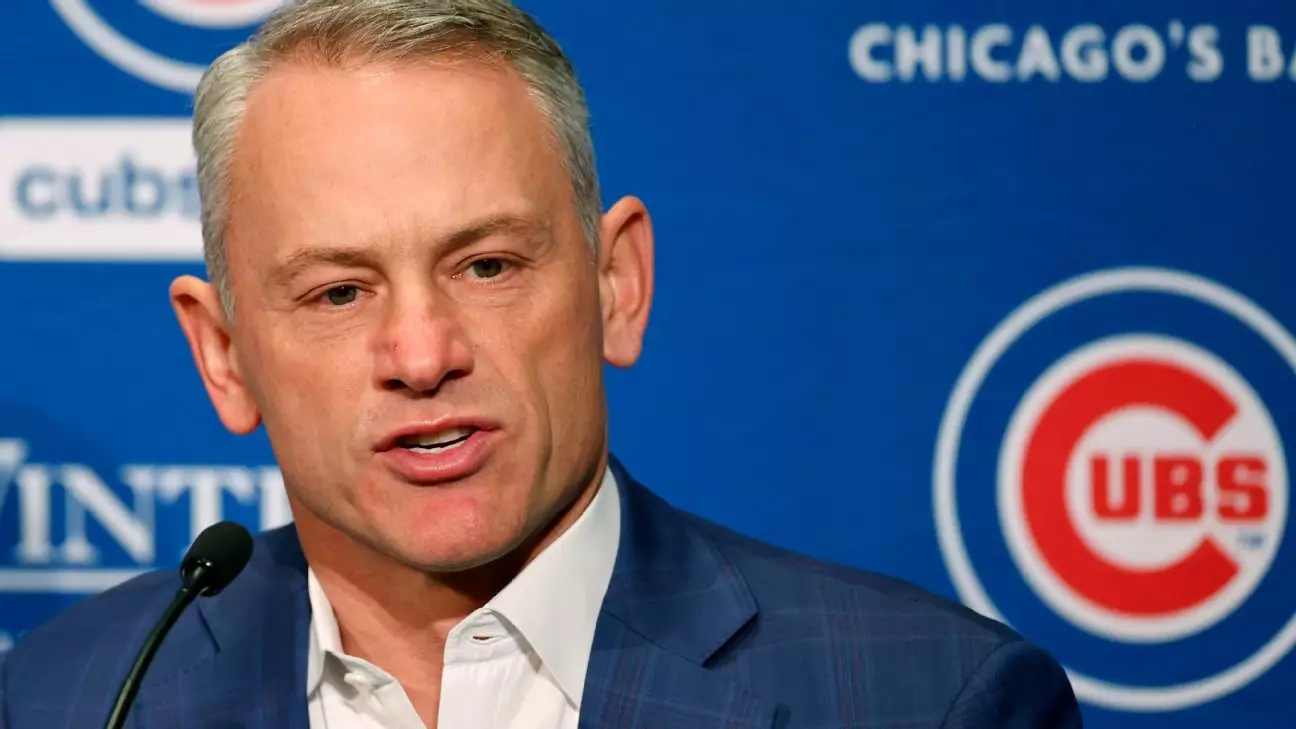As the Chicago Cubs embark on the 2025 MLB season, the pressure is mounting on its president, Jed Hoyer. With ambitions for postseason success weighing heavily on his shoulders and a growing list of impending decisions, this season has implications that extend far beyond mere wins and losses. Hoyer, who has spent 14 years in the organization, is aware that his contract will also come under scrutiny, as playoff appearances have evaded him since he took the helm. The intricacies of rebuilding a team that once stood as a paragon of success have reached a critical juncture, making this season pivotal for both Hoyer’s career trajectory and the future of the franchise.
Hoyer’s task, which can often feel Sisyphean, is centered around rejuvenating a roster that became stagnant after the team’s championship era. How does a franchise that once basked in the glory of a World Series victory shift its momentum back to competitiveness? For Hoyer, the answer lies in a mix of strategic player acquisitions and homegrown talent. The Cubs have opted for measured growth, emphasizing the importance of the draft and making prudent signings rather than chasing high-profile free agents. This measured approach may yield longer-term benefits but comes with its share of risks, particularly when juxtaposed against teams that are not shy to invest heavily into their squads.
The recent addition of players like Dansby Swanson and Seiya Suzuki indicates a desire to meld experience with emerging talent. Yet questions loom over whether these incremental improvements will be enough to satisfy a fan base yearning for a return to the glory days. Hoyer has acknowledged these challenges candidly, recognizing the anxiety that comes with uncertainty, especially at a time when every move is scrutinized against the backdrop of upcoming contract expirations and franchise expectations.
For the first time in years, there has been a notable shift in the Cubs’ approach to their roster construction. As Hoyer evaluated the offseason, it was clear that the once hesitant strategy was replaced with a newfound urgency. The acquisition of Kyle Tucker through a calculated trade not only signals a pivot in strategy but emphasizes the organization’s commitment to fielding a competitive team. Hoyer’s assertion that “wins will be at a premium” rings true for an increasingly competitive National League landscape. This acknowledgment of the league’s pressure provides context for Hoyer’s own sense of urgency and aims to galvanize both the organization and the fan base alike.
With the Cubs facing off against formidable opponents like the Los Angeles Dodgers to kick off the season in Japan, establishing a competitive edge early on may prove crucial. Hoyer remains circumspect regarding the possibility of further acquisitions, like a potential signing of third baseman Alex Bregman, yet implies that exploring avenues for improvement remains open-ended. His comments reflect an acute awareness that the late offseason often yields lucrative opportunities, underscoring a change in market dynamics since past winter meetings.
Ultimately, Hoyer’s future with the Cubs hinges on his ability to foster a successful season. While any postseason appearance would likely lead to an extension of his contract, the specter of failure also looms large. This duality creates an environment rife with introspection for Hoyer, who recognizes the weight of legacy and leadership that comes with this role. His commitment to rebuilding is juxtaposed with the expectations of immediate success, creating a challenging balance between nurturing young talent and achieving short-term goals.
It is evident that the Cubs’ leadership structure, including Hoyer’s relationships with the coaching staff and general manager Carter Hawkins, will play a crucial role not only in shaping the team’s identity but in determining Hoyer’s fate. If the organization’s progress is to be measured in tangible results this season, maintaining alignment and focus will be paramount. As Hoyer looks ahead, the potential for success appears bright, yet the stakes could not be higher. The combination of emerging talent and strategic acquisitions must manifest into victories, or the consequences may reverberate throughout the organization and forever alter Hoyer’s legacy within the Chicago Cubs.

